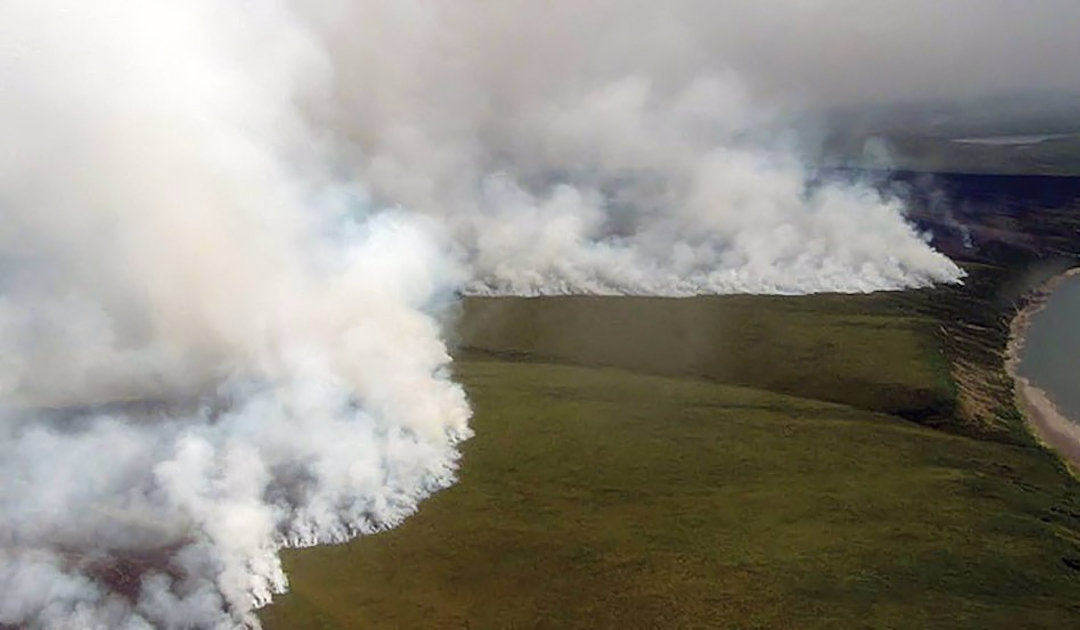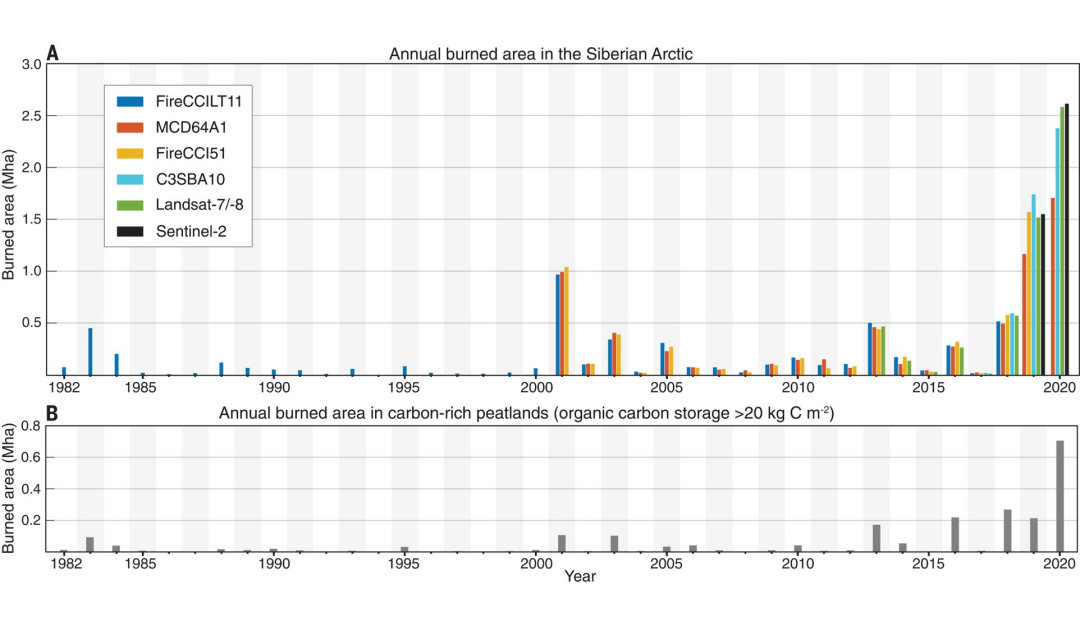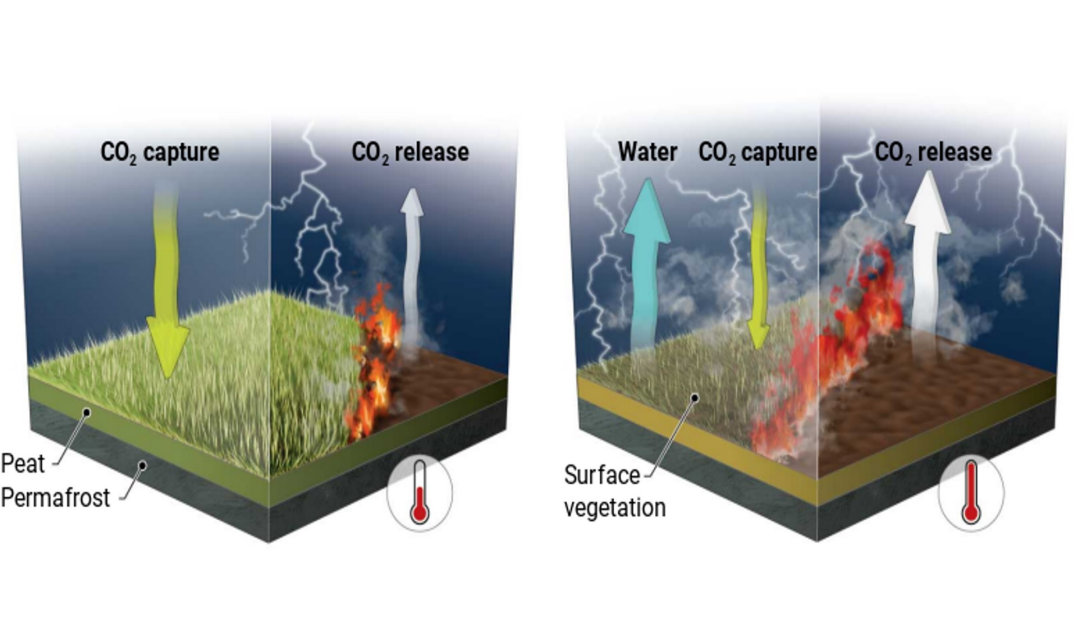
For some years now, it’s not just melting permafrost or dwindling sea ice that have been doing the rounds when it comes to the effects of climate change in the Arctic. Experts are also becoming increasingly concerned about the sometimes massive fires in the subarctic and arctic regions. They are concerned not only with the fires themselves, which destroy millions of hectares and rarely go out even in winter, but also with the potential impact on regional and global climate. An international, large-scale study has been devoted to the topic and the results have been published to coincide with the start of the World Climate Conference.
More fires in the Arctic, especially in the Russian part, have been linked to rising temperatures in the region and have resulted in greater CO2 emissions to the atmosphere from the burning of carbon-rich peat soils in the Arctic. This will be exacerbated by warming temperatures, making fires even more severe and frequent. These are, in summary, the results of the study conducted by Adrià Descals of the Ecology and Forestry Research Center in Barcelona and his colleagues. According to their findings, before 2050, burned peat-rich regions in the Arctic will have increased exponentially. The work was published and commented on last week in the prestigious journal.


The research team obtained its findings after examining multiple satellite-based estimates of burned areas in the Siberian Arctic. In doing so, they were able to draw on a data archive dating back to 1982. The data showed a huge increase in fires in the last two years of the 2019 and 2020 study. At that time, nearly half of all the land affected by fire during the 39 years of the study burned, releasing about 150 million tons of carbon into the atmosphere. According to the expert group, the increasing warming of the region is and was responsible for this. It dried out the soil, which is usually moist and cool. On the one hand, the drying out means that not as much CO2 can be absorbed, and on the other hand, the danger of stronger thunderstorms and lightning strikes increases, which would cause more frequent and, thanks to the dry soil and vegetation, stronger fires. According to calculations by Descals and his team, an average summer temperature in Siberia above 10°C or an average ground temperature above 17°C would be enough to make exactly this scenario a reality.

The study shows that during the two years in Siberia, more carbon was released than is normally stored by such soils. Thus, an increase in such fires could very quickly provide further impetus for warming in the Arctic. Although the results have been calculated for a large part of the Arctic, because the Russian share of the Arctic land area is the largest, the team would like to carry out further calculations and investigations in order to be able to produce a better and more certain statement about the development of fire danger in the Arctic. In particular, warming-driven changes in vegetation types and plant species plus a more detailed study of other Arctic regions affected by fires should provide further insights. But Adrià Descals and the rest of the team are certain that the number of severe tundra fires will continue to increase and that it is only a matter of magnitude. And they also see the fact that this will cause peat soils, which were previously considered carbon sinks, to burn more and go from a sink to a carbon source. The question here will also be how strong.
Contributed image: (C) Screenshot NASA Youtube Video
Dr Michael Wenger, PolarJournal
More on the topic





